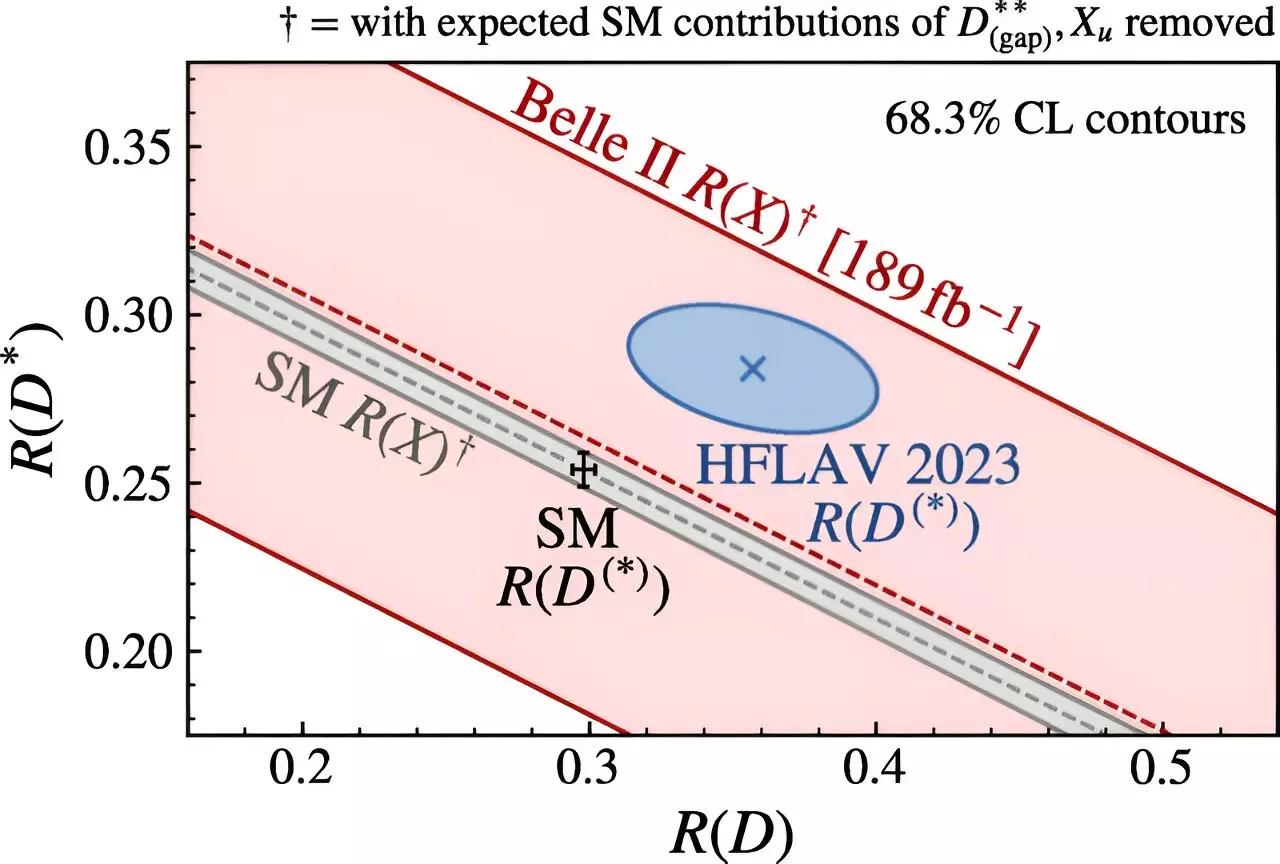The Belle II experiment stands as a monumental endeavor in the realm of particle physics, primarily focused on investigating the weak interaction parameters, dissecting exotic hadrons, and unveiling potential new physical phenomena that lurk beyond the established frameworks of current physics theories. Hosted at the High Energy Accelerator Research Organization (KEK) in Tsukuba, Japan, the Belle II experiment draws upon the data harvested from the Belle II detector—a sophisticated spectrometer—and the SuperKEKB particle collider. These entities combine to create a unique environment for groundbreaking research that could redefine our understanding of the universe.
Breaking Ground with New Measurements
In a recent and significant publication in *Physical Review Letters*, the Belle II Collaboration made headlines by achieving the first direct measurement of the tau-to-light-lepton ratio with respect to inclusive B-meson branching fractions. This measurement is not just a shareable finding; it’s an intricate puzzle piece that allows physicists to examine the universality of charged-current weak interactions, a foundational aspect of particle physics. Karim Trabelsi, spokesperson for the Collaboration, emphasized this point, stating that the current best theory—known as the Standard Model—assumes that charged leptons, which include electrons, muons, and taus, interact with forces in an identical manner.
The very essence of lepton universality is under scrutiny. Any deviations from this universality could indicate the presence of new physics phenomena that are not accommodated by the standard model. The aim of the recent study was particularly focused on probing the tau lepton in relation to its lighter counterparts, considering discrepancies present in previous measurements.
Understanding Tau and Light Lepton Ratios
The particular intrigue in comparing tau leptons to the lighter electrons and muons lies in what is known as the tension—a disparity between current experimental measurements and theoretical predictions governed by lepton universality. Where traditional experiments have previously centered on decays involving a single charmed meson, Belle II’s comprehensive approach stands out. By examining inclusive decays, the experiment offers a broader dataset that could highlight inconsistencies in the principles laid out by the Standard Model.
Moreover, theoretical frameworks surrounding exclusive and inclusive decays provide distinct predictive insights that, while disparate, work together to strengthen the search for potential violations in lepton universality.
The Cutting-Edge Techniques Behind the Discovery
The importance of this measurement is underscored by the fact that it is the first of its kind in over two decades. Belle II’s findings rely on the nuanced characteristics of lepton momentum and energy signatures gleaned from electron-positron collision data. The experiment seeks to capture pairs of B mesons without the interference of additional particles, allowing for clearer data when analyzing the resulting decay paths of leptons.
The methodology employs advanced techniques to differentiate between prompt leptons generated by B mesons and those originating from tau decays. The significant variances in momentum and energy characteristics between these two types of decays become the crux of Belle II’s analytical sophistication. Trabelsi notes that through detailed calibration and refinement of background distributions, they could accurately segregate the signals of interest, although introducing inherent systematic uncertainties in their measurements.
Toward Larger Data Collections and Future Prospects
While the Belle II Collaboration’s recent measurement aligns significantly with the predictions of the Standard Model, it also provides a tantalizing prospect for observing potential discrepancies indicative of non-standard model physics. Trabelsi maintains that progress is constant, with ongoing efforts to augment their data collections in the coming years. As they gather more extensive datasets, the hope is to continuously refine these measurements and explore further implications regarding lepton universality.
These findings harness the excitement of the scientific community. They enable a deeper dive into the quest for elusive new particles that might be responsible for any observed violations within lepton universality. Researchers are optimistic that upcoming data releases will yield additional insightful measurements, potentially culminating in revelations that challenge existing paradigms in particle physics.
In essence, the Belle II experiment embodies the spirit of inquiry that propels the field of particle physics forward. As researchers cultivate a landscape rich in data and open to new discoveries, the collective ambition remains steadfast: to answer fundamental questions about the building blocks of the universe and to illuminate the shadows cast by current theoretical models.

